Nodding Victim: Tormented 12-year-old girl lives like pigs
For a typical 12-year-old who should be the picture of health: physical, overly playful, full of energy, noisy and mobile, Nancy Lamwaka is the opposite. She is skinny, malnourished, hungry, profoundly retarded and immobile.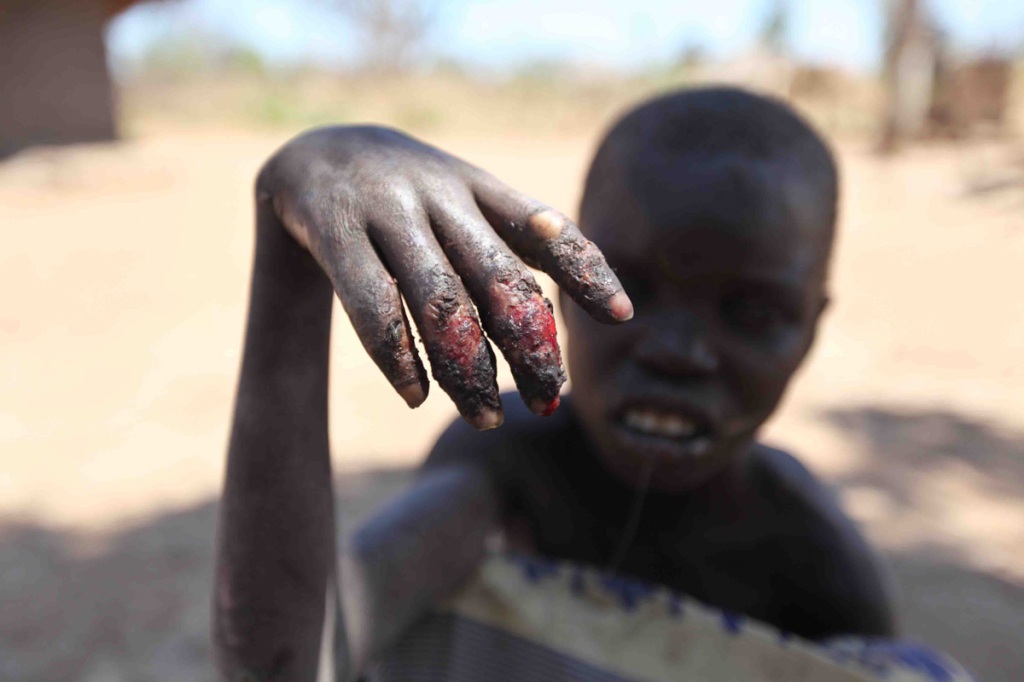
With the help of a guide, we approached a simple home composed of two huts in Labul sub-county, Pader district. One of the huts functions as the kitchen. The environment is calm, dominated by tall mango trees. The loudest noise here came from the cocks crowing a good morning to a village that has attracted world attention because of a mysterious disease yet to have a medical name, let alone explanation.
We are ushered in and given wooden seats as Michael Odongkara, Lamwaka’s father, walks back into the living hut. Moments later, he re-emerges with a girl, half naked, pale, looking tired and with her legs tied together. Her eyes are evidently dreading the day ahead. 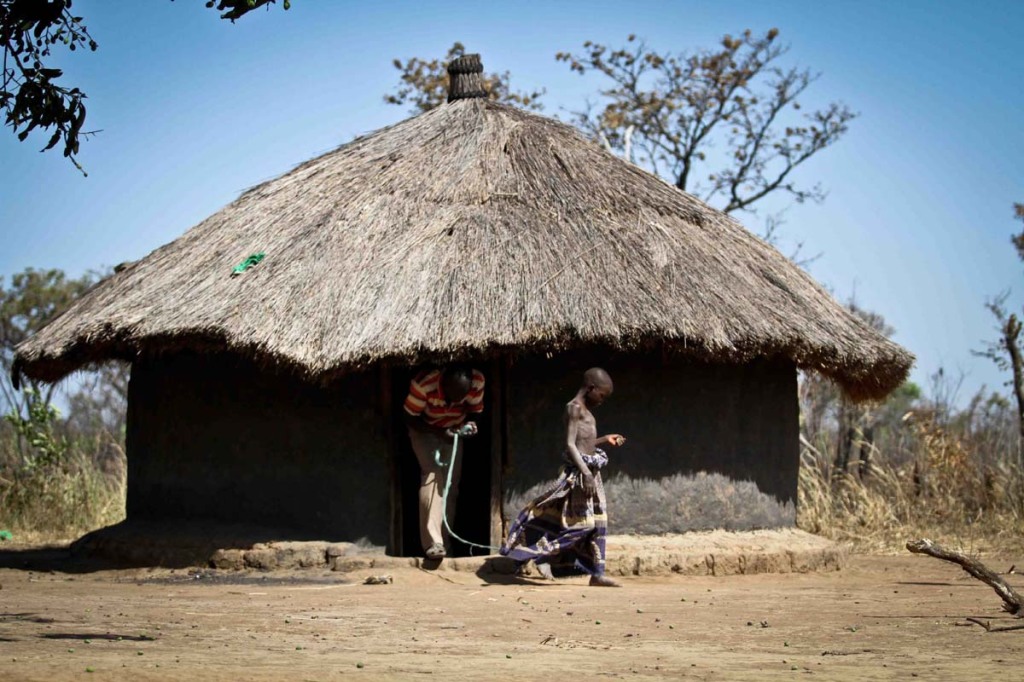
Lamwaka lives in isolation and in unimaginable despair, seemingly deep in thought and lost in a world she doesn’t understand.
Her troubles started in 2004 when she first collapsed, kicking like someone gasping for breath. Luckily for her, she continued breathing. Doctors diagnosed her ailment then to be epilepsy.
WRONG DIAGNOSIS
In 2008, she started developing symptoms that looked different from the known signs of epilepsy. This time, doctors were not able to define the disease she was suffering from, although it later came to be termed the ‘nodding disease’.
The disease, which lacks a scientific name and cure to date, has rendered Lamwaka so dangerous to herself that she has to be tied to a tree trunk for at least 13 hours a day for fear that she could hurt, or worse, kill herself, after previously getting close to doing so. Her hands are scarred from burns after she fell into fire a while back.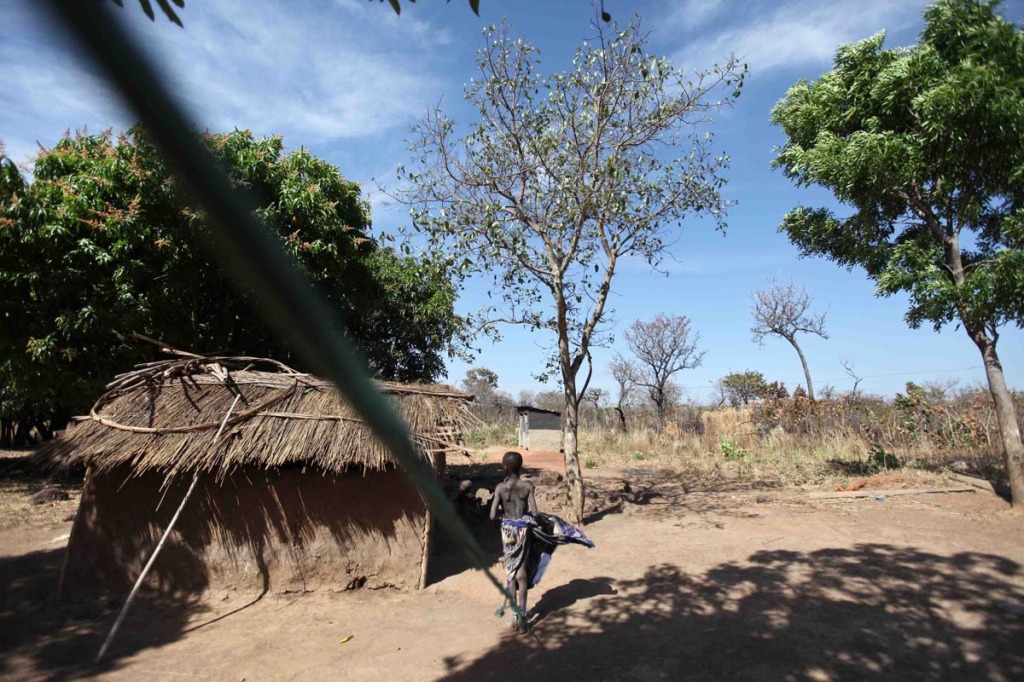
Her father’s heart bleeds daily as he goes through the traumatising routine of tying his own daughter to a tree like an animal. He says only his two pigs receive such treatment.
“It hurts me so much to tie my own daughter on a tree because in our tradition, it’s a taboo and unheard of. But because I want to save her life, I am forced to. I don’t want her to go loose and die in a fire, or walk and get lost in the bushes, or even drown in the nearby swamps,” he says.
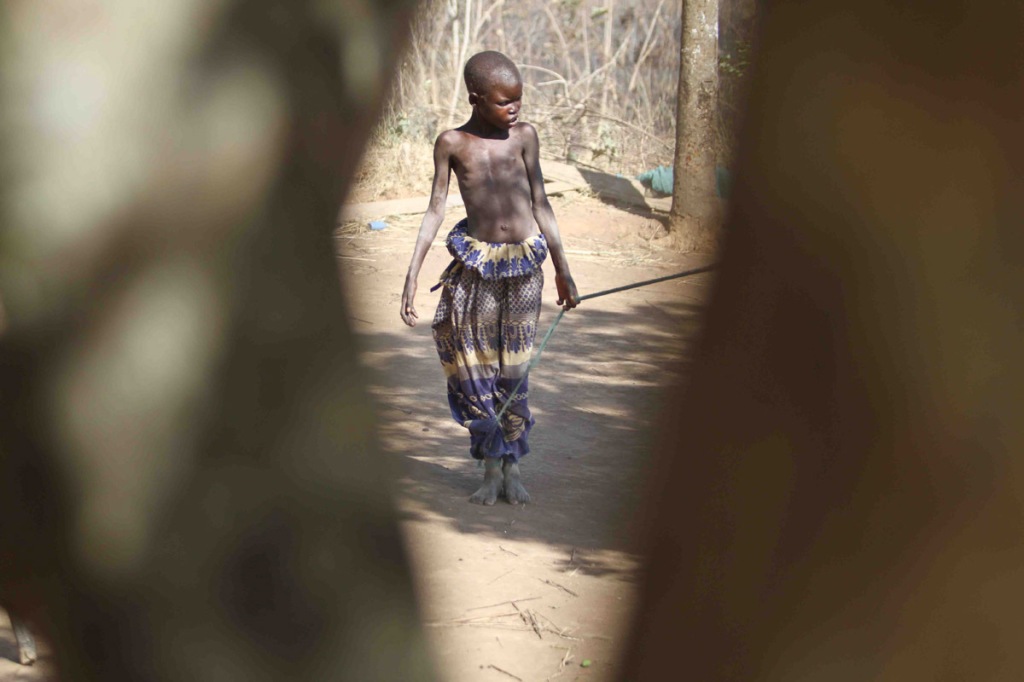
Under the tree, she struggles to move towards the direction of the shade as the sun begins to shine hard. She stumbles but moments later, recovers her waning energy and follows the shadow.
All along Lamwaka is quiet, looking drowsily at her siblings seated a few meters away. She has not said a word or made a sound since she woke up. You could sense she wants to say something; perhaps invite her two siblings to play with her, but she just looks on, her eyes heavy and mouth effortlessly open, only occasionally shutting to close out preying flies.
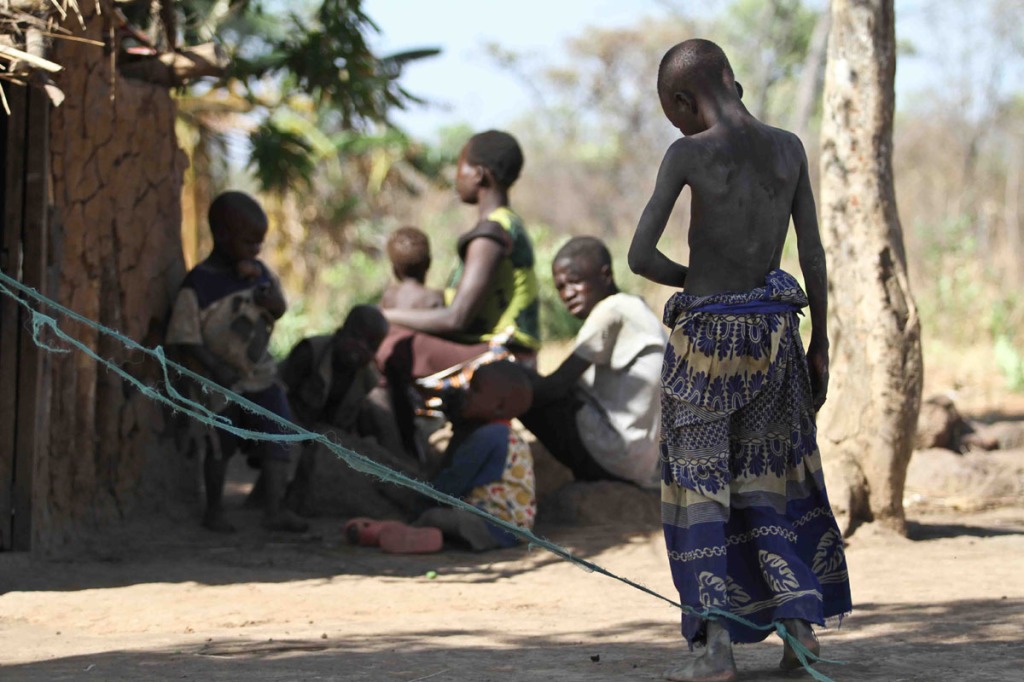
Her siblings stay away from her most of the time and look on curiously at a distance for fear of contracting the disease, known to affect children aged between 0 and 15 years.
The only company Lamwaka is left with is the tree trunk she is tied to, her brave parents, a few hens pecking around and a host of nagging flies trying endlessly to feast on her rotting fingers.
As the sun settles above us, lunch time is beckoning. To Lamwaka, the mere sight of food is like a huge storm coming, her dad says. Only this time, she has no shelter; nowhere to run to take cover. She is exposed, about to be swept away.
“She gets attacked by the nodding disease every time she eats food, yet she has to eat to stay alive,” Odongkara says.
Food is Lamwaka’s worst tormentor. She can live with the pain, with the loneliness, with her ugly wounds, but not with food. Children affected by the disease are known to repel sights of food or its smell.
As her mother, Grace Akumu, approaches with a plastic plate of food, Lamwaka looks on in fear. Akumu kneels down, washes her daughter’s hands and starts feeding her. Every mouthful is swallowed with pain and hesitation.
Moments later, she cries out loud and instantly becomes stiff before falling down onto the hard, dusty ground and kicking furiously with so much energy. She is suffering an attack: her eyes become pale and static and saliva flows out of her mouth as her body shakes vigorously. Gradually, the stiffness wanes, she becomes silent, her eyes close and she falls asleep.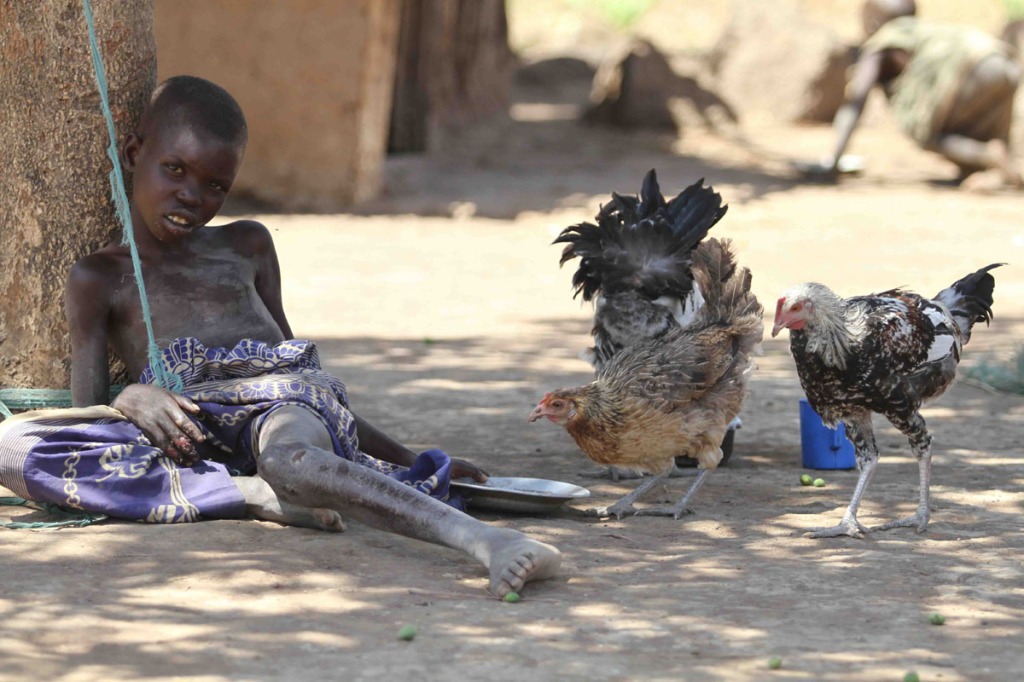
Ten minutes later, Lamwaka wakes up and sits up, leaning against the tree trunk. She pulls herself together and struggles to stand up, before taking aimless walks around the tree she is tied to. On a normal day, her parents say, she suffers such attacks at least five times.
Hopeless as the situation may seem, Odongkara does not want to lose hope. It is easy to see that he deeply loves his daughter, even in her state. Memories of the good old days before Lamwaka fell ill are still fresh in his mind. He says she was a cheerful, loving and responsible child who took good care of her siblings and drew only excellent reports from her teachers at school.
“I have never stopped hoping that Lamwaka will recover,” he says. “From the time she was diagnosed with epilepsy in 2004 and the nodding disease in 2008, I have remained hopeful.”
Still, he cannot hide his pain, despair and desperation. “I know for now, the disease has no cure and if it’s not found soon, I’m afraid that Nancy, like all the other children suffering, is as good as dead.”
I thank you.
These things I never heard of. It’s shocking.
No wonder Shakespeare (in Hamlet) says, “There are more things in heaven and earth, Horatio, than are dreamt of in your philosophy.”
And no wonder the ancient people of Kemet wrote, “Routine and prejudice distort vision. Each man thinks his own horizon is the limit of the world.”
Human misery appears to know no bounds. My heart to this child.
Hotep!
I felt as though my heart would break after reading this, Edward.. For 17 years I worked with children and adults with learning disabilities starting back in the 1970’s when conditions in the UK were pretty appalling… things are mostly improved here ( though still there is much discrimination ) but seeing this just brought all the horror of how it was flooding back to me.
That a child has to live like this in the 21st century reflects badly on the whole of humanity..
Thats a sad story, very touching!!
OMG!!!
am just speechless.
Very touching..
Misery this one!
As a parent, this is the kind of suffering I wouldn’t want my girl to experience. And to imagine Lamwaka’s daughter has been suffering from the disease for almost 10 years? Are the people in government even parents?
Sorry, Odonkara’s daughter Lamwaka
i saw that in burkina and i still dont get the thing with attaching sick people to tree, were not in one hundred years of solitude…
Its very absurd that such a world exists!
A real and very sad document, the cruel reality of a world full of words where truth transcends all boundaries that human beings can imagine. Governments do nothing politicians in the world who think only in power.
Your photographs propose a goal that the human race must overcome and achieve that all have equal opportunities in health, nutrition and education.
Thanks for sharing the truth of things.
Cruz del Sur
the sad bit of it is that, that’s how it is supposed to be, we can’t all be equal til the end of humanity. Christianity says til the second coming of the Jesus. That’s what we yield from our spiritual rebellious ways
I should probably not respond to this but the injustice of it makes me crazy. I feel even sadder to read your comment Alvin Baz… people/society accepting that this is inevitable or as you put it “that’s how it is supposed to be” ( whether for religious reasons or not) allows poverty and inhuman conditions to be accepted when they should never be. NEVER ! to suggest that in some way this little girl might have deserved this in some way because of “our spiritual rebellious ways” is simply appalling to me.
If your God is love and is all powerful he could and should stop this.
(my apologies for writing this on your blog Edward but I couldn’t keep quiet and if you feel you need to remove my comment I will understand. )
I’m speechless, but in awe of your documentation of Nancy and this undeserved disease. I am happy to hear that she has loving parents who will not give up. Thank you so much for sharing your beautiful work on a very moving subject.
She’s indeed very lucky to have people who care so deep for her. Every disadvantaged person needs absolute care. Amidst what Nancy is going through, she has love at least
Edward, I have been silently following your posts for a while now and I must tell you that this one wrenched my heart out. I was pitying myself because I too have health issues and they have seemed unsurmountable to me. After reading your post, I realize that it so selfish of me to feel this way. I am lucky to be where I am and to have the support and resources available.
I pray that this poor little girl is cured. It is a shame that in this day and age, a child suffers so much.and such loving parents have to take such drastic measures to save her life.
God bless you for bringing this story to the world.
Thank you so much for your comment. I have sent you an email please.! Cheers
Echwalu, send me an email also. There are some photographs that I would like to use in awareness campaigns, and I need your permission. (I tweeted you, but didn’t hear back from you 😦
I just sent you an email please!
This really broke my heart. I hope and pray that she is cured.
On a more positive note, I absolutely love the way you have documented this story. The photographs are brilliant! Thanks for sharing
Pingback: Aquí en la tierra… | cruzdelsur
Eddie, this for real is a sad story.
For now, there isnt a cure for the bad disease but atleast you are sharing with the rest of the world about the situation which we hope may bring us some luck in getting rid of it.
Thanks.
Thank you Julian. Social Media can play a very crucial role in taking to the world, to the relevant authorities. Their stories need to be told for the world to react!
Great work you are doing Edward, creating awareness about this disease and putting a face to it. I do not think most of us had quite grasped the gravity of the situation in Northern Uganda. Thank you.
Indeed. It needed a face and am glad this has had an impact in a way…After it ran, the Ministry of Health called a press conference and dispatched more teams to the affected districts. Sometimes, we have to get personal with the subject to really tell the story well. I tried to do so!
That your story has made such a difference is wonderful news Edward..Journalism can indeed have the power to do good when it is used well as in your case. Do you know if there will be changes for this particular child?.
On saturday I will link to this blog on my own blog 1500 Saturdays if I may? as I have some things I want to say about supporting children and families in other countries.
Thank you again for the difference you are making.
No words to describe what I feel right now. No words whatsoever! This brings tears to the eyes. Its sad, painful and just so heart breaking!
Thank you Edward,
For bringing documentary evidence of what the people in Northern Uganda have been going through. After two decades of war, we still don’t know what is killing our people. Whatever is in the air and in the water still continues to find new victims as government drags its feet and largely ignores the plight of vulnerable Ugandans.
http://www.monitor.co.ug/News/National/-/688334/1329170/-/b0pd91z/-/index.htm
The fatalism and callousness of some people is just shameful. It does nothing to help an already terrible situation. Such ignorance only serves to perpetuate dangerous stereotypes that have been used to malign and disenfranchise the people of the north.
Peace, and one day there shall be justice.
Reblogged this on The Stray Bulletin and commented:
So painful so sad.
Pingback: Nicholas and Carren « 1500 Saturdays….
Thank you so much for re-blogging and spreading to the world, the plight of an innocent 12 year old Nancy Lamwaka
Spreading the word is the very least the rest of us can do , Edward.
My heart is hurting right now.. such a tragical destiny for a wonderful little girl. I feel like jumping into the photos to play with her, read stories to her and do whatever that might ease her suffering. A story like this really puts things in percpective. Thank you for sharing. I wish there was something that could be done to help. Is it ok for you if I link this on my blog?
You can link it please?
As a mother of 5 I can not imagine losing a child and I cannot fathom watching my child struggles to survive this awful disease that has plague these children.
I saw a comment about genetics but I would think that was most like the first thing they checked. It in some ways reminds me of the Rabies virus as that attacks the brain and causes its victims to repel water and food. It has two different strains and one is icalled the dumb virus as its victim tends to act lost and wanders aimlessly while the other strain causes madness. I know it is a disease that is carried by animals but can be transfered to humans usually through a bite. It seems that maybe there is a possible link that no one has stumbled upon. I pray that a cure is found for this disease now that there is more publicity about it. Up until today many of us have ever heard of this but hopefully by many of us sharing this news of the dire need for something to be done, maybe the medical labs all over the world will help to solve the mystery of this terrible affliction.
No comment
The world is very selfish and funny and full of our self deception !This is the daughter of a poor peasant…….Had it been………Guess what I mean here..Where is our intervention as human kind when this strange disease is ravaging some section of our society right in our face ? Let us think and truly think twice and deeply !!!!
father God in heaven where the world asks many questions you always have an answer right from Genesis until now even in this particular time in nothern uganda the heal the sickness which is amistery to all o3 us and heal the land non of us needs this on going oppression. You alway have aplan lord even now act Lord!
I think this is not a question of had it been…the causes of this condition would be known. Health professionals, Ugandans and international partners particularly CDC experts, are all involved in in trying to establish the cause behind such debilitating condition. So it is my prayer that for once we dont politicise this condition, but work together for solutions. Thanks, Edward, though. This is great work. Be blessed and let’s hope for best that a cause can be discovered sooner than later.
I had never heard of this before. Indeed, the world is filled with so much tragedy, it’s hard to keep up with it all. After seeing this post, I did some research, and was dismayed to find out how many children and families suffer with this.
I’ve been admiring your work for a while now, since it is not only beautifully documented, but always thought provoking, informative and meaningful.
Pingback: Uganda Nodding disease patients; Is it a crime to seek better healthcare? « Rosebell's Blog
Pingback: World, Where Were You? Uganda, Where Are You??? « The Brown Letter
Pingback: Uganda Nodding disease patients; Is it a crime to seek better healthcare? « Afronline – The Voice Of Africa
What a sad story. Thank you for sharing it with us. You are a very talented photographer, but also a very talented writer! You managed to describe this tragedy in a very moving, emotional way, but without going for the heartstrings or choosing an over-dramatising language. A great example for excellent journalism.
Thank you Mary. Deeply appreciated
Pingback: Support Nodding Disease victims; the most urgent challenge to a northern Uganda child « Rosebell's Blog
Reblogged this on Kenyan Foodie and commented:
Care about issues in Northern Uganda? This gives the story of nodding victims. Sad!
thanks my neighbour
Just seen this on BBC website http://www.bbc.co.uk/news/world-africa-17319434
Thank you for this insight into her life, and this first hand look at this disease. Will be spreading it through twitter – Evelyn Namara just directed me to your blog today.
Thank you for spreading the word about her plight.
This innocent soul is more valuable than the oil and billions legislatures are debating on. They are wasting their precious time on earth discussing vanity instead of making Lamwaka’s case a national issue.
Pingback: Urkost-Blog zur Urkost des Menschen - einfach, vegan und schön! » Blog Archive » Boah ey - you are so brave Mr. Clooney! Nodding Disease is the problem
Pingback: Kony 2012 « loccocuslandia
Pingback: Kony 2012 « loccocuslandia
Pingback: One month later, Nancy Lamwaka registers some “Improvement” « Echwalu Photography
I work in the mental health field and these pictures and this story break my heart…i have seen a lot of children with disabilities but i have to give her father and mother so much credit, usually parents will just put them in a group home or something to get them off their backs, these people are heros in my opinion and they are obviously so in love with this child its wonderful and its amazing they knew they had to take that step to tie her up for her own safety and the safety of others. Hope there is a “cure” soon and she is able to make a full recovery and they get there fun, honest, and helpful daughter back soon.
Pingback: Nodding Victim: Tormented 12-year-old girl
Pingback: Nodding Disease: Success stories under difficult circumstances
More information from the BBC .. http://www.bbc.co.uk/news/world-africa-17589445 the more this is talked about the better !
Pingback: Beyond Kony: Rebuilding Life in Northern Uganda « Echwalu Photography
Pingback: Nodding Disease, Joseph Kony, and the Children of Northern Uganda
Pingback: Support Nodding Disease victims; the most urgent challenge to a northern Uganda child | ugandawomenspeakout
Pingback: La nostra Coscienza Sporca – Nodding disease, la malattia dei bambini zombie | Il Blog di KreaThink
Thank you for your photo-account. Sorry, I am not an English mother tongue but I hope to be able to convey my message. I inserted the link to this site in my blog as I think you message is powerful and as far as I can I want to spread it.
wow!!! i was moved to tears when read this. What can be done to better or even support them?
She actually passed on two months back! Sad sad indeed
Reblogged this on tinamounjwok and commented:
Brings Pain to my Heart, but I believe that using the media to bring forth this gripping trauma will make a change. Rest in Peace Nancy.
Well Phrased,Chief.